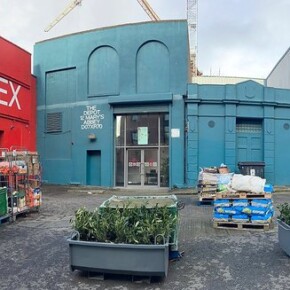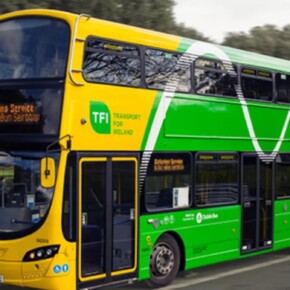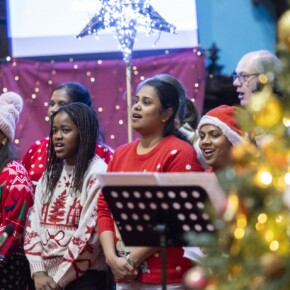Chronically low turnout could benefit incumbents in Tallaght South
Mike Finnerty 22 May 2024
Political scientists have tried to figure out for years why turnout is often so low in the context of local elections.
The average turnout for the 2019 South Dublin County Council election was 40.5%, a smidge higher than the 39.1% average from all constituencies contested on Dublin City Council, but it was one South Dublin County Council constituency that had the lowest turnout anywhere in Ireland; Tallaght South.
Tallaght South had a measly turnout of 27% in 2019.
The neighbouring Tallaght Central had a turnout of 41.6%.
In the spirit of journalistic endeavour, we looked up what exactly was going on in Dublin that particular day which translated to just over 1 in 4 Tallaght South voters were bothered to vote.
The Spice Girls played Croke Park, Shamrock Rovers beat Cork City 2-0, and it was an overcast day with some light rain showers.
On the world stage, Theresa May announced her intention to step down as Prime Minister.
Unless the residents of Tallaght South were Spice Girls fans or sad about Theresa May’s resignation, it is easy to find out why residents weren’t bothered to take a trip to the polls that day; the candidates didn’t appeal to them and/or believed the electoral process wasn’t working for them.
In early May, RTÉ journalist Kieran Dineen looked to get to the bottom of why Tallaght South voters felt so disillusioned with the political process with one quote saying “what’s the point really, to be honest?” and another local quoted as saying “I just I don’t know enough about it to be honest.”
His research found that Ballinamore in Leitrim had the highest local turnout in all of Ireland in 2019; 66.9% of registered voters made a trip to the polls that day, nearly 40% higher than Tallaght South.
Dineen’s piece quotes a local business owner who said that among those that vote, tackling anti-social behaviour is a major issue that needs sorting.
2019’s election results saw a strong rebuke to government parties; only Fine Gael were successful in getting their candidate Baby Pereppadan.
Pereppadan will be running again in this 5-seater, but 2024 is a different set of circumstances to the 2019 locals.
The context in which the 2019 locals were fought has been somewhat lost to time, but it took place in the backdrop of the Fine Gael-Independent government (with Fianna Fáil in confidence and supply) being hit with scandal after scandal over the likes of housing, healthcare and general cost-of-living issues such as insurance costs.
The more things change, eh?
It can be surmised that voters in this part of Dublin were simply burnt out by the political process and stayed home.
2019 was a bad day at the polls for Sinn Féin in general, but Tallaght South voters saw fit to elect their three candidates.
Sinn Féin has made no secret about wanting to become the biggest party on Dublin City Council and have been going pell-mell in trying to become the biggest party on South Dublin County Council too.
Four candidates will appear under the Sinn Féin banner next month, with only one of their original 2019 cohort, Louise Dunne, looking to secure re-election.
Sinn Féin’s original 2019 poll-topper, Paddy Holohan, will be running as an independent candidate following his suspension and subsequent expulsion from the party.
Holohan made a number of remarks on a podcast that party leader Mary Lou McDonald described as “totally at odds” with the party in early 2020.
Whether Holohan keeps his seat remains to be seen, it’s entirely possible people will vote for Holohan on name recognition, but Sinn Féin running four candidates against him can be read that the party is looking to stop him in his tracks.
Successful 2019 candidate Dermot Richardson will also appear on the ballot as an independent, having resigned from the party in September of last year saying he could achieve more as an independent.
Sinn Féin coming up against two former candidates is a tough act, which possibly explains why they are running four candidates.
Anthony Clinton, Sinéad Courtney-Staszek and current councillor Cathal King round out Sinn Féin’s quartet.
Should turnout remain as low as it was in 2019, there is every possibility that Sinn Féin get three of their candidates elected in this 5-seater, but getting four elected doesn’t seem doable based on current polling.
Both Solidarity and People Before Profit will be running a candidate in Tallaght South which further dilutes the left-of-centre presence on the ballot.
Both of them are in an alliance at a Dáil level but compete for the same voters at a local level.
This distinction is important to note because Solidarity won a seat here in 2019, but People Before Profit did not.
Current Solidarity councillor Leah Whelan will be looking to serve a full term on South Dublin County Council but will have to contend with a Sinn Féin that has actually vetted their candidates as well as People Before Profit running Kay Keane.
To party members, giving Solidarity and People Before Profit first and second preferences is natural, to the general public, there is no discernable difference between them.
Getting that message out will be crucial if the left wants to win here.
There is the wildcard of People Before Profit’s pre-election call for a pact between them, Sinn Féin and the Social Democrats (who aren’t running here) but considering how little politically engaged this constituency appears to be a message like that may not cut through.
Labour will be running Abdulaziz Almoayyad in the seat after sitting out the 2019 race.
The last time Labour appeared on the ballot here in 2014 they managed to get a candidate elected.
Their successful candidate in 2014, Martina Genockey, resigned from the party in September 2018 after expressing concern about the direction Labour was taking under Brendan Howlin and saw out the rest of her term as an independent.
Labour has had well over five years to rebuild the brand in Tallaght South; time will tell if the rebrand is successful.
Despite getting 5.8% of first preferences in 2019, Fianna Fáil has opted to run two candidates in Tallaght South.
Lynda Prendergast and Adam Smyth will be lining out for the party, but a government party running two candidates in a constituency that is historically hostile towards the government party of the day is either the sign of a well-tuned election machine or overconfidence.
Fianna Fáil could be betting on turnout being so low in Tallaght South again they can get one of their people elected, but that is a high-risk, high-reward strategy.
Turnout will ultimately shape up how this race is run; a low turnout is likely to favour those who are seeking re-election and the ong may remain the same.
A higher turnout (say somewhere above 40%, the average turnout for South Dublin County Council) could prove a double-edged sword for government parties.
More people turning out than 2019 could be a sign that the people of Tallaght South are happy with the government a few months out from a general election, or they could be eager to send a warning shot by voting for the opposition parties in greater numbers.
For the avoidance of doubt, we have checked the big gig in Dublin on the night of June 7; warbler Cian Ducort will be playing in St. Anne’s Park while Shamrock Rovers are pencilled in to play Bohs.
If the turnout is low again, we will know who to blame.











